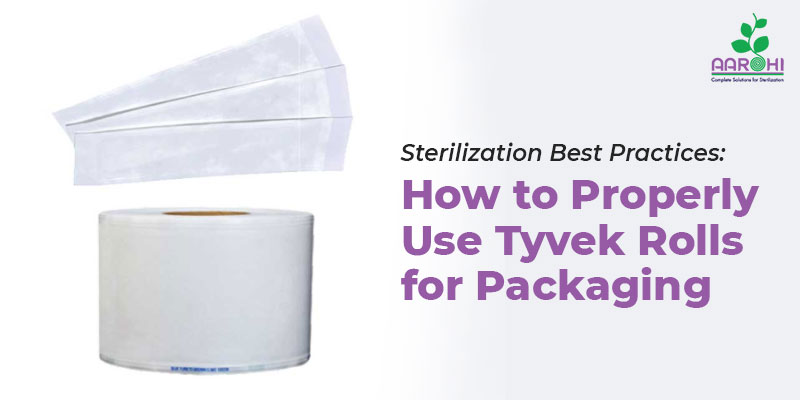Learning how to choose the right sterilization product is essential. This is because every time you use a dental instrument, device, or equipment, it becomes contaminated and needs to be sterilized to make it safe for the next use.
The right sterilization product can help to ensure that your dental instruments, devices, and equipment are sterilized adequately for the next use.
As for the sterilization method, CDC recommends using moist heat in the saturated steam form under pressure. It is not only widely used but also highly encouraged across the globe.
For the uninitiated, steam sterilization is done by placing the dental items inside the autoclave and exposing them to direct steam at an appropriate pressure & temperature for a specified time.
That said, let’s check out the parameters for effective steam sterilization.
4 Most Important Parameters of Steam Sterilization
Effective steam sterilization requires the following 4 parameters.
- Steam The best type of steam for sterilization is entrained water & dry saturated steam.
- ressure To quickly kill microorganisms, the pressure inside the autoclave must achieve the specified temperature necessary.
- TemperatureFor effective steam sterilization, 121°C & 132°C are the most common temperatures. Furthermore, these temperatures must be maintained for the specified time period in order to kill all microorganisms.
- TimeSterilization time varies based on the type of material to be sterilized, whether the item is wrapped or not, and the sterilizer method used. The type of material can be metal, rubber, plastic, items with lumens, and so on. Following are the CDC recommended minimum steam exposure time period for wrapped items:
- 30 minutes at 121°C in a gravity displacement sterilizer.
- 4 minutes at 132°C in a pre-vacuum sterilizer.
Steam Cycle Monitoring
Now that you know the 4 parameters of effective steam sterilization, let’s talk about steam cycle monitoring process. Usually, steam sterilizers are monitored using a graphical printout, which involves measuring temperature, time at the temperature, and pressure.
In any steam cycle, chemical indicators are affixed on the outside as well as incorporated in the sterilization packaging to monitor either time and temperature or just temperature.
To measure the effectiveness of steam sterilization, a biological monitor with spores of Geobacillus stearothermophilus is used.
If you see positive spore test results, the first thing you need to know is that they occur very rarely. And most of the time, they occur because of operator error, equipment malfunction, or sometimes poor steam delivery.
How to Maintain Sterilized Items Until Next Use?
Maintaining sterilized items is equally important as sterilizing used items before the next use.
Thankfully, there are plenty of packaging options you can consider to maintain your sterilized items until they’re required to use again.
The most common types of packaging include:
- Sterilization wraps
- Sterilization reels
- Sterilization roll stock
- Peel-open pouches
- Rigid containers
Regardless of which packaging option you prefer, it is vital to use a packaging material that permits penetration of the sterilant, protects the item against contact contamination during handling and has a withstandable barrier to microbial penetration.
Most important of all, the packaging material must maintain the sterility of the item post-sterilization.
How to Pick the Right Sterilization Packaging?
As you’ve just learned, there are several types of packaging options you can choose to maintain your sterilized products.
However, it is important to learn how to determine the right sterilization packaging for your items.
Usually, the sterilization packaging must be selected depending on the following criteria:
- Barrier Effectiveness Packaging should block microbial penetration, liquid penetration, and maintain the sterility of items.
- Penetrability Packaging should only allow steam to penetrate.
- Aeration It should allow aeration post-sterilization of items.
- Drapeability It should smoothly conform to content contours.
- Size Flexibility It should accommodate items of different sizes & shapes.
- Puncture Resistant It should prevent punctures from any kind of sharp objects.
- Tear Strength It should not tear.
- Transparency You should be able to look through without opening the packaging.
- Linting The linting must be minimal during use.
Additional Sterilization Requirements
As you may already know, effective sterilization is absolutely essential for the safety of patients.
And apparently, a lot goes into ensuring patient safety than following an effective sterilization process & quality packaging.
Apart from the standard criteria, here are a couple of additional sterilization requirements you can consider to uplift the sterilization of items:
- Efficient facility design
- Proper documentation & reporting procedures to enable the traceability of every item
- Process improvement & quality control systems
- Infection control & prevention practices
- Staff education & training programs
- Availability of equipment, qualified personnel, and other required resources
These are the additional requirements you can consider implementing to elevate the effectiveness of your sterilization approach
Conclusion
That said, if you’re searching for the best sterilization products and are confused, we recommend checking out our products.
Aarohi Sterilant is a leading manufacturer of medical sterilization packaging products since 2015.
We have a state-of-the-art infrastructure, modern machinery, and a top-notch manufacturing unit that has allowed us to become India’s largest sterilization packaging manufacturer. Please visit our products page for more details on the same.




